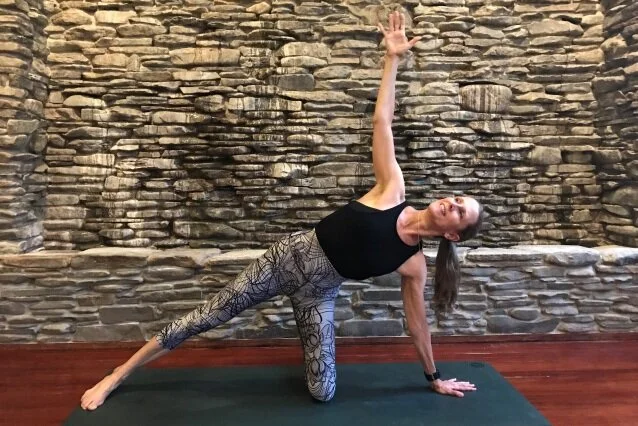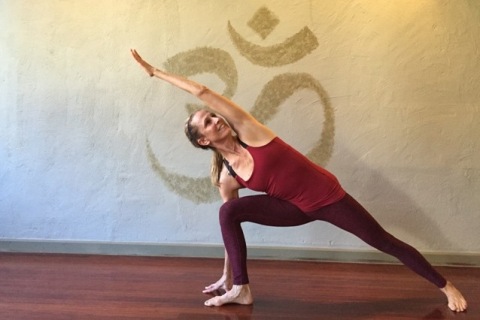Last week I was talking about “monsters”. Those tricks of the mind that fool us into thinking our thoughts are real and that we are better off staying safe and not venturing out into the scary unknown. But when we face our monsters and take them on, then true transformation can happen.
I had been sharing from Eckhart Tolle’s book A New Earth and wondering aloud what would be the next book I would read. One of my students recommended Tea and Cake with Demons by Adreanna Limbach. It fits so nicely in with the theme of monsters. In the introduction Ms. Limbach shares the classic story of the Buddha and the demon Mara:
There is a widely circulated Buddhist story about the time that a demon came to town and everyone lost their minds. This wasn’t any garden-variety demon, mind you, and yes, there are garden-variety demons. A touch of awkwardness, restlessness, longing—anything that nibbles at our peace of mind can be considered a demon; albeit some are harmless and benign. These are the basic sorts of demons that we meet any old Monday afternoon when we’re pinged with the impulse to be somewhere else or somebody else or to just go grab a snack out of boredom. This particular demon story, however, is about Mara, who in Buddhist cosmology is the most malignant demon of all. You might recognize Mara if you saw him, but if he’s a pervasive force in your life, then in the same way that we can develop an acclimated blindness to what is overly familiar, you might not see him at all. Mara is the specter of delusion whom we chauffeur through our life; the interior voice that robs us of our faith, trust, and confidence, of our belief that we are fundamentally whole. In Buddhist mythology, Mara is self-doubt personified; a force that’s depicted as convincing, relentless, and strategic, and in this story he’s coming for the Buddha.
Buddha’s attendants caught wind that Mara had materialized, and they went running to alert Buddha that his nemesis was near. In my own paraphrased version, I imagine a cohort of visibly shaken monks clad in saffron robes banging on the Buddha’s door. “Buddha! Buddha! Mara is here! Mara is here!” When the Buddha opened the door to his distressed attendants, they understandably launched into strategy. “What should we do? Should we run? Let’s pack up our begging bowls and get out of town. We have enough advance warning that we can probably outrun him!” Another monk chimed in, “We’ll never be able to run fast enough. Let’s hide! I know of a place that is secure and hidden. Mara will never find us there. Quick!” Yet another chimed in, “Maybe we should plan an ambush! Let’s arm ourselves with shields and spears and face Mara on the offensive!”
This part of the story I relate to deeply. It’s as though these monks are diplomats of my own mind. More than a decade of meditation practice has afforded me many hours of watching my relationship to discomfort. The moment I feel it, I’m on the express track to strategizing my way out of it. This reaction applies to even the most mundane experiences. The absence of air-conditioning in August. An awkward conversation. A mosquito in my vicinity. Never mind how I might react if Mara, the Lord of Delusion, rolled into town with my name in his mouth. Just like the monks, without skipping a beat, my mind launches into How do I fix this right now? I don’t want to spend time with my discomfort. I certainly don’t want to feel it. I just want it to be different. Better . . . with the least amount of effort, if possible.
There is something universal being spoken to in this story of Mara, which is, of course, the enduring beauty of mythology. Each of these monks represents our habitual ways of reacting when we come into contact with our demons. We want to run from them, or hide, or fight. What the Buddha does instead is so counterintuitive that it offers us a wholly alternative plan of action for when we encounter our demons. In the presence of his attendants trying to strategize the problem of Mara away, he holds his seat and gives simple instructions: “Go fetch Mara and escort him to my door. Set the table with my finest china. And invite him in for tea, not as my enemy, but as my esteemed guest.”




























